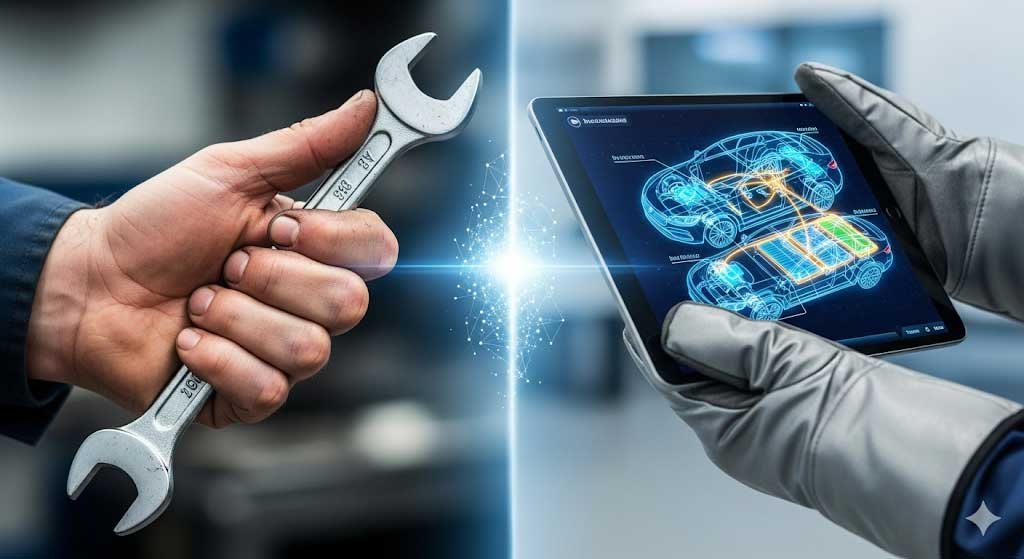
The automotive industry is undergoing its most significant transformation since the assembly line. At the heart of this revolution isn’t a new type of engine or an alternative fuel, but something far less tangible and infinitely more complex: software. Welcome to the era of the Software-Defined Vehicle (SDV), a seismic shift that is reshaping not only cars but also the work of every professional in the sector, from mechanics to body shop technicians.
But what exactly does “Software-Defined Vehicle” mean? In simple terms, it’s a car where features, performance, and even the driving experience are primarily determined by software rather than hardware. While in the past, adding a feature required installing a new physical component, today it often just needs a software update. Functions like engine management, active safety systems (ADAS), infotainment, and even driving modes are governed by millions of lines of code. Modern cars have become data centers on wheels.
The Impact on Diagnostics: Goodbye to the Old OBD-II
For decades, the OBD-II port has been the primary window into a vehicle’s soul. However, in the age of SDVs, this traditional tool is showing its limitations. Modern vehicles are equipped with complex network architectures, similar to those in IT, with security gateways protecting critical systems from unauthorized access.
This means that diagnostics is no longer a simple matter of reading error codes. It requires tools that can communicate securely with the vehicle, interpret real-time data streams from dozens of sensors, and, increasingly, connect to the manufacturer’s servers to obtain authorizations or download the correct procedures. Diagnostics is becoming a cloud-based service, where the workshop must manage subscriptions, authentications, and a stable internet connection as proficiently as a torque wrench. The real challenge is no longer just understanding what is broken, but why the software is behaving in a certain way.
New Skills Required: The Mechanic Becomes an IT Technician
This technological transition demands a radical upskilling. The auto professional of the future must possess a hybrid mindset, blending traditional mechanical knowledge with a solid foundation in IT, networking, and advanced electronic diagnostics.
Key skills to develop include:
Opportunities for Independent Workshops
While this evolution presents a significant challenge, it also opens up new and exciting opportunities. Independent workshops that adapt first will gain a huge competitive advantage. Specialization will become key. We may see service centers focusing on software diagnostics for specific brands, recalibration of ADAS systems post-update, or the management of connected vehicle fleets.
Investing in continuous training and next-generation diagnostic tools today is not an expense, but a strategic investment in the future. Ignoring the software revolution means risking obsolescence in a market that waits for no one. The workshop of the future will be a place where bits and bolts coexist, and the most successful professionals will be those who can master both. The question isn’t if this change will impact your business, but how prepared you are to turn it into a growth opportunity.
There are no results matching your search
© Copyright 2025. All rights reserved. Teknicals Ltd London UK